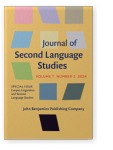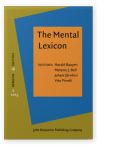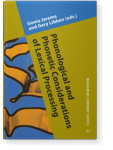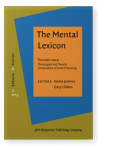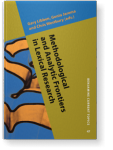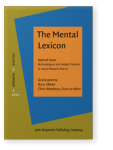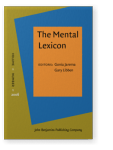Kenneth I. Forster
List of John Benjamins publications for which Kenneth I. Forster plays a role.
Journals
The Mental Lexicon (ML)
Edited by Harald Baayen, Melanie J. Bell, Juhani Järvikivi and Vito Pirrelli
ISSN 1871-1340 | E-ISSN 1871-1375
2015 Testing the viability of webDMDX for masked priming experiments Phonological and Phonetic Considerations of Lexical Processing, Jarema, Gonia and Gary Libben (eds.), pp. 169–198 | Article
The DMDX software package (Forster & Forster, 2003) is a Windows-based
application that displays stimuli and records responses. Recent developments in this program have made it possible to deploy DMDX experiments over the Internet. This study evaluates the viability of the web-deployable… read more
2013 Testing the viability of webDMDX for masked priming experiments Phonological and Phonetic considerations of Lexical Processing, pp. 421–449 | Article
The DMDX software package (Forster & Forster, 2003) is a Windows-based application that displays stimuli and records responses. Recent developments in this program have made it possible to deploy DMDX experiments over the Internet. This study evaluates the viability of the web-deployable… read more
2012 Using a maze task to track lexical and sentence processing Methodological and Analytic Frontiers in Lexical Research, Libben, Gary, Gonia Jarema and Chris Westbury (eds.), pp. 81–91 | Article
A word maze consists of a sequence of frames, each containing two alternatives. Subjects are required to select one of those alternatives according to some criterion defined by the experimenter. This simple technique can be used to investigate a wide range of issues. For example, if one alternative… read more
2010 Using a maze task to track lexical and sentence processing Methodological and Analytic Frontiers in Lexical Research (Part I), Jarema, Gonia, Gary Libben and Chris Westbury (eds.), pp. 347–357 | Article
A word maze consists of a sequence of frames, each containing two alternatives. Subjects are required to select one of those alternatives according to some criterion defined by the experimenter. This simple technique can be used to investigate a wide range of issues. For example, if one alternative… read more
2006 Early activation of category information in visual word recognition: More on the turple effect The Mental Lexicon 1:1, pp. 35–58 | Article
In semantic categorization, nonwords that are neighbors of exemplars (e.g., turple in an animal categorization task) cause interference, but neighbors of nonexemplars (e.g., tabric) do not. This can be explained in a cascaded activation model in which the decision process selectively monitors… read more
